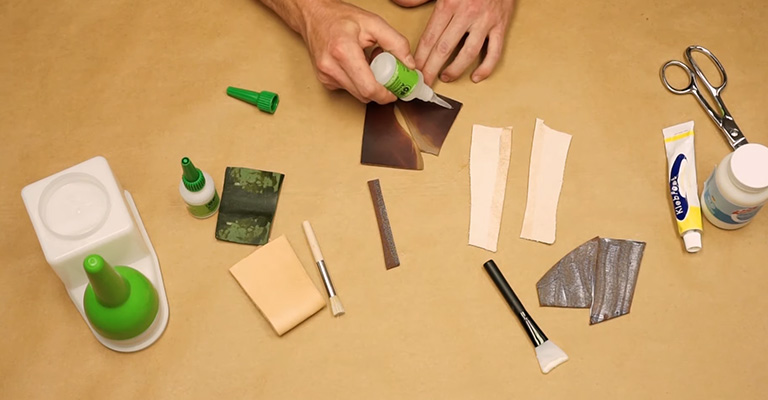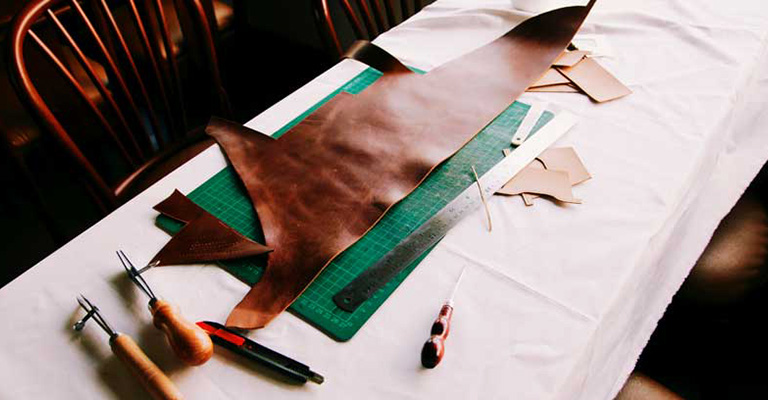Super glue is the standard name that is used to refer to a group of rapid-acting adhesives that are popularly utilized in the household, medical, and industrial applications.
The glues are intensely strong and have excellent bonding characteristics.
Super glues are also known as cyanoacrylate adhesives or instant glues because they bond surfaces faster than the regular glues.
Can You Use Super Glue on Leather?
Super glues are manufactured with different forms depending on the surfaces they are intended to bond. Some cyanoacrylate adhesives are designed for wooden materials, metals, plastics, or ceramic surfaces.
Can you use super glue on leather shoes?
The answer to this question is debatable. Some special super glues are designed for bonding leather surfaces, but most of them are not effective for gluing leather surfaces together.

Examples of Super Glues
- White craft glue
- Yellow wood glue
- Spray and fabric adhesives
- Most super glues are available in liquid or gel forms, and this enhances the preciseness with which they can be applied between surfaces.
- They have excellent bonding characteristics.
- They can be used to bond a wide variety of materials.
- They do not require additional solvents during application.
- Super glues have underlying cure mechanisms that make them efficient for most applications.
Why Super Glue is not Effective on Leather Materials
The article will focus on the advantages of any kind of shoe glues, adhesive and some properties of leather that make it an inappropriate material for bonding using super glues.
1. Leather is Flexible
For the super glue bond to last longer, the surfaces to be bonded should not be subjected to shear forces. Due to the flexibility of leather materials, bonded surfaces slide across each other causing them to separate easily.
Although super glue would temporarily bind leather surfaces, the strength of the bond depreciates with time as the leather surfaces grind across each other.
2. Leather is Porous
The strongest bonds of super glue are achieved when the adhesive is applied between non-porous surfaces. Non-porous surfaces such as those of plastics and ceramics obtain the strongest bonds because they do not allow moisture to penetrate their joints.
On the other hand, leather allows moisture to penetrate its joints, and this weakens the strength of super glue with time.
3. Leather Easily Soaks Water
Another main reason that reduces the effectiveness of super glue on leather is the fact that leather quickly soaks water. Water weakens the areas that have been bonded.
As the bonded surfaces are subjected to more water/moisture, the bonds weaken even further and break.
4. Super Glue Reacts with Leather
When super glue is applied on the leather, an exothermic chemical reaction takes place, and this destroys the chemical composition of leather. The reaction dissipates a lot of heat, which decomposes leather deteriorating its appearance and physical nature.
It is, therefore, not advisable to use super glue to bind leather surfaces.

Breakthrough
Through research and intensive studies, some specialized super glue which can be used on leather materials has been designed. A popular example is the Gorilla glue, which is effective at binding leather surfaces together.
The super glue is characterized by a quick set time and a remarkable bonding strength.
The glue has been manufactured with impact-resistant substances which enable it to handle hard drops.
Additionally, the adhesive is waterproof, and this ensures that the bonds remain intact even when leather soaks in water.
Last Words
To sum up, the answer to ‘Can you use super glue on leather?’ depends on the type of super glue in question. As you have noticed, some super glues are effective at bonding leather surfaces while others are not.
